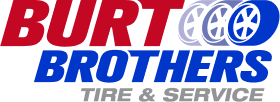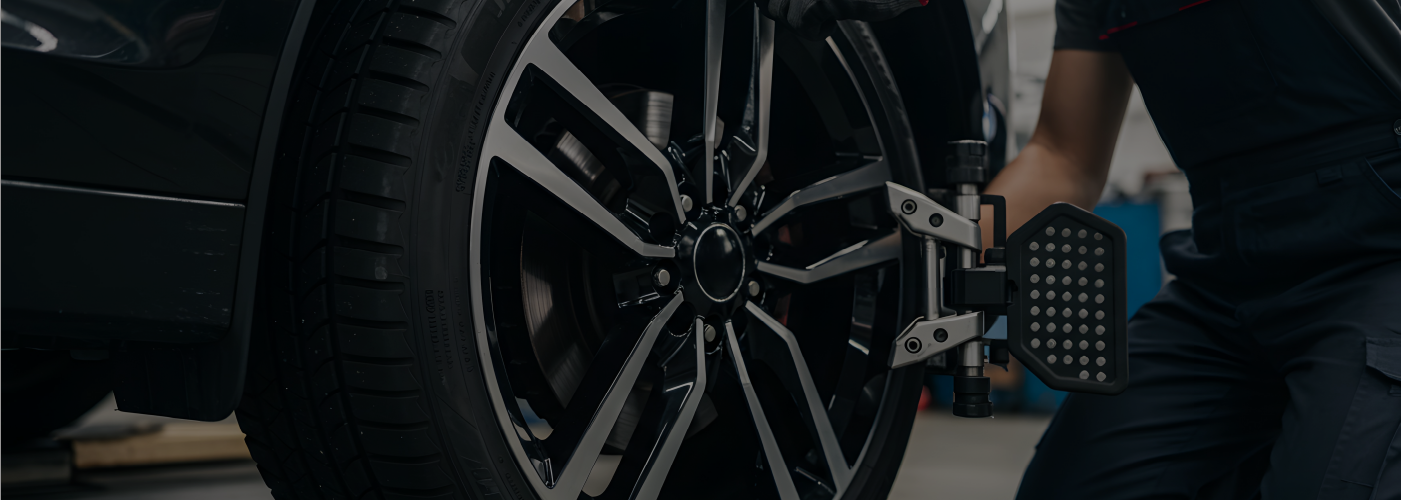When it comes to car maintenance, many drivers confuse tire rotation with wheel alignment—or assume they’re the same service. In reality, they’re two very different procedures that play a huge role in tire safety, performance, and lifespan.
Tire rotation ensures your tires wear evenly, while wheel alignment makes sure your wheels are angled properly so your vehicle drives straight and handles smoothly. Ignoring either service can shorten tire life, hurt fuel economy, and make your car less safe.
At Burt Brothers Tire & Service, we see it all the time: customers come in with uneven tread wear, steering issues, or vibrations, and the cause often comes down to skipped rotations or misaligned wheels. Understanding these two services, and scheduling them regularly, can save you money while keeping you safe on the road.
What Is Tire Rotation and Why Is It Important?
Tire rotation is the process of moving tires from one position on your car to another (front-to-back, side-to-side, or a combination). The purpose is simple: to balance out tread wear so all four tires wear at the same rate.
Because the front tires usually handle more braking and steering forces, they wear faster than rear tires. By rotating them, you help extend the life of your tires and improve overall performance.
Common Tire Rotation Patterns
- Front-to-back – moving front tires to the rear and vice versa.
- Cross rotation – swapping tires diagonally across the vehicle.
- Directional tires – only moved front-to-back if they’re designed to rotate in one direction.
How Often Should Tires Be Rotated?
Most manufacturers recommend a tire rotation every 5,000–8,000 miles. A good habit is to rotate tires at every oil change. At Burt Brothers, we offer free tire rotations with the purchase of new tires, making it easy to stay on schedule without extra cost.
What Is Wheel Alignment and Why Is It Important?
Unlike rotation, wheel alignment is not about moving your tires around—it’s about adjusting your vehicle’s suspension so that your wheels point in the right direction. Proper alignment improves steering, tire wear, and overall vehicle control.
The Three Key Wheel Alignment Angles
- Camber – the inward/outward tilt of the tires. Too much tilt causes inner or outer tread wear.
- Caster – the steering pivot angle, affecting stability and steering return.
- Toe – whether tires point inward or outward when viewed from above. Incorrect toe causes feathered tread wear.
Why Alignment Matters
Hitting potholes, curbs, or driving rough roads can knock your wheels out of alignment. Even small misalignments cause uneven tread wear, poor fuel economy, and unsafe handling.
At Burt Brothers, we use state-of-the-art alignment machines to restore precision to your vehicle’s steering and suspension.
Tire Rotation vs. Wheel Alignment: Key Differences
Here’s a quick breakdown for you:
| Tire Rotation | Wheel Alignment |
| Moves tires to different positions | Adjusts wheel angles and suspension |
| Goal: Even tire wear | Goal: Straight tracking & safe handling |
| Frequency: Every 5–8k miles | Frequency: Annually or after impact |
| DIY possible | Requires professional equipment |
The takeaway: both services are essential. Rotation keeps tires wearing evenly, while alignment ensures your car drives straight and safely.
Signs You Need a Tire Rotation
Not sure when to rotate tires? Watch for these common signs:
- Uneven tread wear (front tires more worn than rear).
- Vibrations at highway speeds caused by uneven tread.
- Bald spots, feathering, or cupping on tire surfaces.
- Mileage reminder: If it’s been 6,000+ miles since your last rotation, it’s time.
At Burt Brothers, we recommend checking your tires for wear at every oil change.
Signs You Need a Wheel Alignment
How do you know if your car needs an alignment? Here are the most common indicators:
- Car pulls to one side when driving straight.
- Crooked steering wheel when your car is going straight.
- Rapid or uneven tire wear across your tires.
- Loose or unstable steering feel.
If you notice any of these issues, schedule an alignment right away to avoid premature tire replacement.
How Often Should You Rotate Tires and Align Wheels?
- Tire Rotation: Every 5,000–8,000 miles (check your owner’s manual for specifics).
- Wheel Alignment: At least once a year, or sooner if you hit a pothole or notice steering problems.
Driving conditions in Utah and the Mountain West—think potholes, mountain roads, and winter driving—often require more frequent alignment checks.
Can You Do Tire Rotation or Wheel Alignment Yourself?
Yes, you can perform a DIY tire rotation with the right tools (jack, stands, torque wrench). But many drivers prefer to leave it to the pros for convenience and proper torque specifications.
Wheel alignment, however, should always be handled by professionals. It requires specialized machines that measure your wheels with pinpoint accuracy. DIY attempts can lead to worse misalignment and costly damage.
Our certified technicians use precision alignment machines to ensure your vehicle is safe and efficient.
Benefits of Regular Tire Rotation and Wheel Alignment
Keeping up with these services pays off in multiple ways:
- Longer tire life (get the full mileage out of your set).
- Better fuel economy (less rolling resistance).
- Smoother ride quality (no pulling or vibrations).
- Improved safety and handling (critical in Utah’s mountain driving).
- Lower long-term costs (prevent premature tire and suspension damage).
Drivers often see thousands of extra miles from their tires just by staying consistent with rotations and alignments.
Where to Get Tire Rotation and Wheel Alignment Services
You can rotate your tires at home if you’re confident, but professional service is faster, safer, and more precise. Alignment, on the other hand, always requires professional equipment.
At Burt Brothers Tire & Service, we make it easy to keep up with both:
- Free tire rotations with tire purchase.
- Advanced wheel alignment machines for accuracy.
- Bundled maintenance packages (oil changes, tire checks, and more in one visit).
- Local technicians you can trust—we treat your car like our own.
Keep Your Tires Aligned and Rotated for Peak Performance
Tire rotation and wheel alignment may sound similar, but they serve different—and equally important—roles in keeping your car safe and efficient. Rotation manages tread wear, while alignment ensures your wheels are angled correctly for proper handling.
Skipping these services can lead to uneven wear, poor handling, and higher costs down the road. Staying on top of them keeps your tires lasting longer, improves fuel economy, and ensures safer driving.
If you can’t remember your last rotation or alignment, it’s time. Schedule your service today at Burt Brothers Tire & Service and keep your car running at its best.





